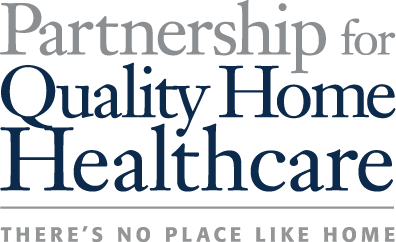June 22, 2020
The Home Health Community Provides Recommendations to CMS on How to Continue Efficiencies, Streamline Regulation, and Maximize Care for Patients Beyond the COVID-19 Crisis
Last week, the Partnership sent a letter to the Centers for Medicare & Medicaid Services (CMS) thanking the agency for their engagement and support of the home health community during the ongoing COVID-19 pandemic. The letter also asks the agency to look beyond the present public health emergency (PHE) and continue the advances and flexibilities that enabled home health providers to efficiently care for their Medicare patient population during COVID-19 and build on these flexibilities going forward.
The letter comes as the pandemic continues to underscore the critical need for access to care in the home setting, particularly for vulnerable Medicare beneficiaries. The Partnership appreciates the steps CMS has taken to reduce regulatory burdens and support home health providers throughout the crisis. While the actions undertaken by the agency have improved patient access and empowered providers, the letter also outlines a number of areas where a permanent adoption of CMS’ current flexibilities would improve the Medicare Home Health Benefit:
Homebound Requirement
In the current crisis, CMS has taken important steps to “presumptively” determine that patients with COVID-19 are considered homebound, which allows them to be eligible for the Medicare Home Health Benefit. By permanently refining homebound criteria and eligibility, CMS has the opportunity to reduce burden on providers, streamline patient care, and provide greater flexibility for physicians to ensure patients get the right care in the right setting. This flexibility can also ensure savings to the Medicare program as Medicare patients are increasingly able to receive care in their homes, avoiding potential higher health care costs in institutional settings. In addition, as COVID-19 has demonstrated, the home is the safest place for America’s Medicare patients and increased flexibility to ensure more health care delivery in the home is the optimal choice.
Telehealth and Remote Monitoring
During the PHE, CMS has allowed physicians to complete the face-to-face visit required for coverage under the home health benefit via telehealth. This has been critical in supporting patient access, and PQHH encourages CMS to permanently allow the face-to-face requirement to be able to be met through the use of telehealth technology. This makes policy sense and will increase efficiencies in the home health care system and benefit physicians, providers and patients.
The letter also highlighted a number of recommended changes that should be made permanent to reduce provider burden and facilitate more seamless care for patients:
- Allow flexibility in the timing for obtaining physician signatures for changes to the plan of care for incorporating use of technology.
- Allow provides to perform the initial and comprehensive assessments remotely or by record review. Additionally, allow any rehabilitation professional to perform these assessments when therapy services are included in the plan of care.
- Allow the required once a year supervisory visit for home health aides to be met using telehealth.
- Allow the costs of telehealth to be included on the cost report as an allowable cost.
PQHH appreciates the many efforts that CMS has undertaken to support providers and patients during the COVID-19 crisis. This experience has shown the home health community that there are efficiencies to be gained in the health care system through streamlined regulations and technology, and the community looks forward to working with CMS to continue improving care for Medicare beneficiaries.
To read the full letter, click here.
